Share Prize 2011
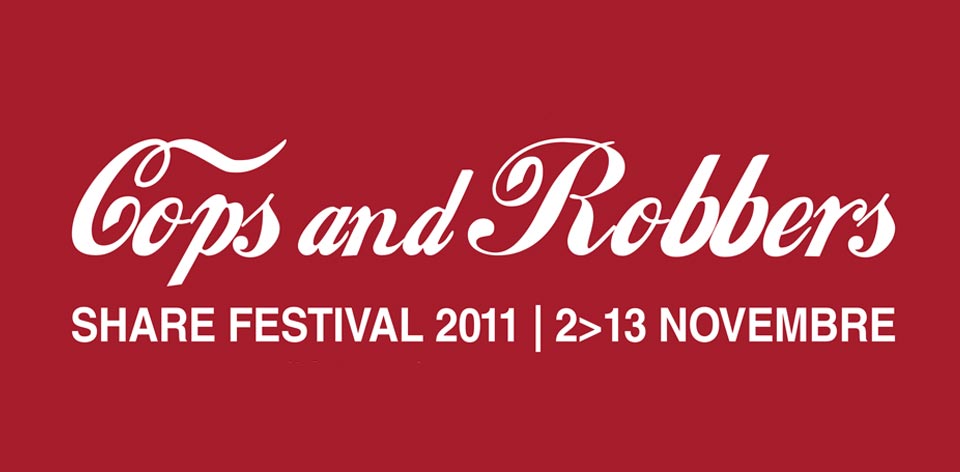
“Cops & Robbers”
The Share Prize this year was focused on Cops & Robbers. The theme takes its inspiration from the use of appropriationism, activism and plagiarism in art, which today has turned fakes, mash ups and remixes into an avant-garde artistic stance that flirts with what customarily is the wrong side of the law.
A theme that fits perfectly with the sort of ‘networking’ that, ever since its beginnings, has straddled the dialectical line between legality and illegality, between theft and giving, between openness and closure, between intellectual property and sharing, and hence between widespread participation and a position of dominance.
Enthusiasm and a throng of visitors for the opening of the Piemonte Share Festival. Greeting the public were directors Chiara Garibaldi and Simona Lodi, who announced the winners of the Share Prize, the prize designed to discover, promote and support the digital arts, before raising the curtain on this year’s exhibition. The Share Prize this year is focused on the theme for the 7th Share Festival, entitled Cops & Robbers.
The theme takes its inspiration from the use of appropriationism, activism and plagiarism in art, which today has turned fakes, mash ups and remixes into an avant-garde artistic stance that flirts with what customarily is the wrong side of the law. A theme that fits perfectly with the sort of ‘networking’ that, ever since its beginnings, has straddled the dialectical line between legality and illegality, between theft and giving, between openness and closure, between intellectual property and sharing, and hence between widespread participation and a position of dominance.
Approximately 250 entries from 20 countries were submitted for the 2011 Share Prize, setting the jury, consisting of Bruce Sterling and Simona Lodi, the curator of the exhibition, a tough task for short-listing the finalists for the much sought-after prize.
The six finalist works, on exhibition at the Regional Museum of Natural Science until 13th November, are: Paolo Cirio and Alessandro Ludovico (IT) Face-to-Facebook, Julian Oliver (NZ) and Danja Vasiliev (RU) Newstweek, IOCOSE (IT) Sunflower Seeds on “Sunflower Seeds”, Mul Geert (NL) God’s Browser, !Mediengruppe Bitnik (CH) Chess For CCTV Operators SWAMP, D. Easterly (NZ) and M. Kenyon (USA) Tardigotchi.
Three prizes have been awarded this year
This year’s 5th Share Prize was awarded to Paolo Cirio and Alessandro Ludovico for their project Face to Facebook. Foe the jury, consisting of Bruce Sterling and Simona Lodi, the curator of the exhibition, “with a title like “Cops & Robbers”, this year’s prize could only really have been won by them, and perhaps another five hackers in the world who have pulled off stunts like this. They are the perfect winners for the Cops & Robbers theme.
They blended artistic elements with an extraordinary talent for activism, bringing Zuckerberg’s colossal to its knees. The winning artists did not hesitate to overstep the line of the law to denounce an even bigger theft to the detriment of users: that of the ownership rights to their personal data, held by Facebook.”
A commendation went to the runners-up, Julian Oliver and Danja Vasiliev, for Newstweek. Their media art work is perhaps better called a critical engineering project, as the artists themselves call it in their manifesto. Computer code is expanded into the psychological and social realms, shaping people’s behaviour.
Awareness of this takes the critical engineer-artist to study the history of art, architecture, activism, philosophy and invention to rework the strategies and ideas of these disciplines for application in art. The end aim is to claim back the intersection between production and consumption of technology.
A third award was introduced this year, assigned by the public and organised in partnership with the contemporary art magazine Artribune. In recent weeks, the public was called upon to cast their vote on the six finalist works and choose their favourite. The winning work was Sunflower Seeds on “Sunflower Seeds” by the IOCOSE group, a performance played out at the Tate Modern in London in January 2011, appropriating an installation by Ai Weiwei in the Turbine Hall, recreated ay the Regional Museum of Natural Science for the Share Festival.
The overwhelming number of votes cast by the public can be read as a wonderful, enthusiastic response to the invitation to participate and take part in the Share Prize. We’ll be sounding you out again next year!
2011 – Winner
Face to Facebook
P. Cirio, A. Ludovico (IT)
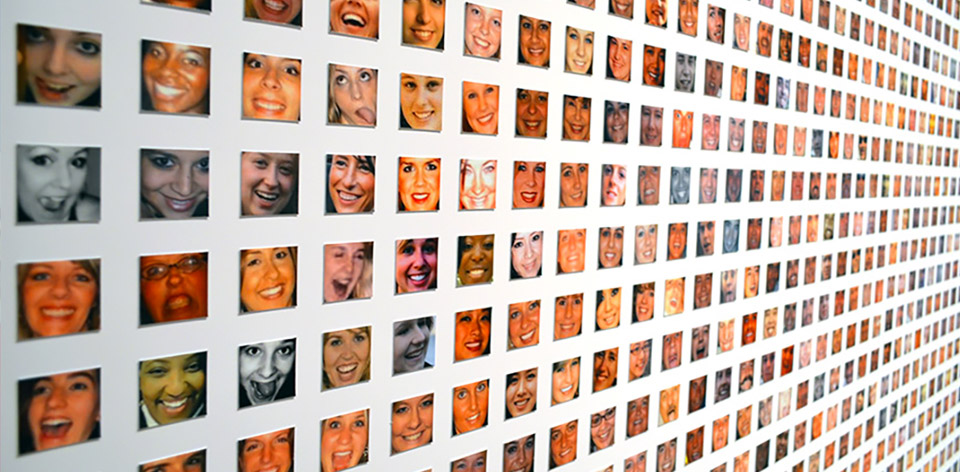
One million Facebook user profiles were stolen using software specially designed for the purpose by the artists.”
A professional job, if ever there was one! Putting this information together, they went one step further by importing and matching the profiles on a fake dating website [www.Lovely-Faces.com]. As though reconstructing people’s histories from scratch, they invent a virtual site that is fake, but built on real data. People still tend to confine what we do on-line to the visual space of the screen.
Face-to-Facebook questions online privacy in practice, through one of the web’s most iconic platforms. Face-to-Facebook is the final project of the series “Tha Hacking Monopolism Trilogy”, consisting of the works “Amazon Noir”, selected for Share Prize in 2007, and “Google Will Eat Itself”.
Paolo Cirio (IT) works as media artist in various fields: net-art, street-art, software-art and experimental fiction.
Alessandro Ludovico (IT) is a media critic and editor in chief of Neural magazine since 1993. He teaches at the Academy of Art in Carrara.
2011 – Honorary Mention Winner
Newstweek
J. Oliver (NZ), D. Vasiliev (RU)
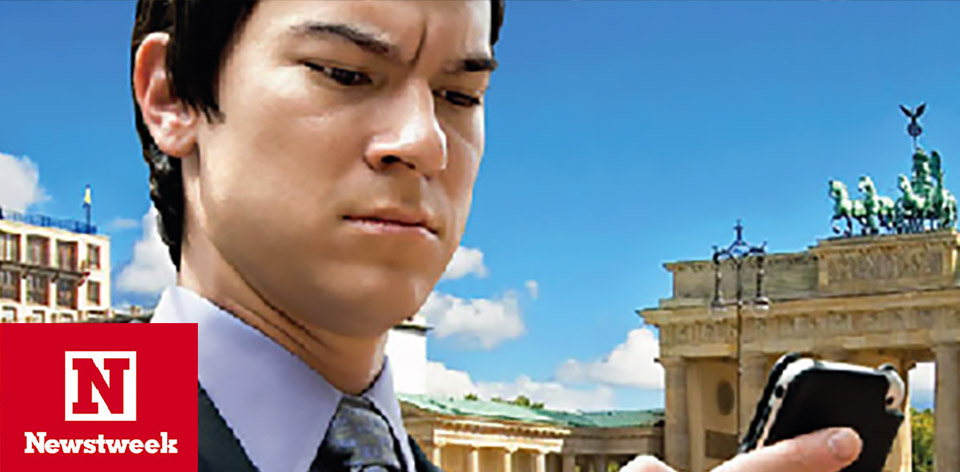
Who trusts information today?
Private interests and lobby group have free rein in the selection and distribution of news. Newstweek is a device for manipulating news read by other people on wireless hotspots. Built into a small and innocuous wall plug, the Newstweek device appears part of the local infrastructure, allowing writers to remotely edit news read on wireless devices without the awareness of their users.
Newstweek can be seen as a tactical device for altering reality on a per-network basis, signalling a word of caution, that a media-defined reality is a vulnerable reality. Along the course of news distribution there are many hands at work, and digital distribution offers a growing opportunity for the manipulation of opinion, from source to destination.
Julian Oliver (NZ) is a New Zealand critical engineer based in Berlin. His projects have been presented at many museums and international electronic-art event.
Danja Vasiliev (RU) works with digital systems, machines, networks and software. In recent years his research has been aimed to the relationship between physical- and hyper- realities.
2011 – Public Winner
Sunflower seeds on“Sunflower Seeds”
IOCOSE (IT)
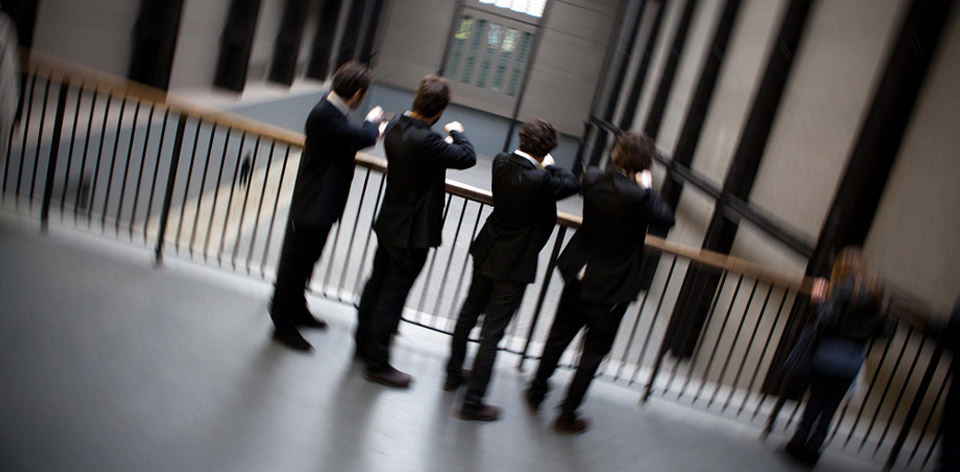
The four members of the art group IOCOSE went to the Turbine Hall at Tate Modern in London where there was the piece “Sunflower Seeds” by Ai Weiwei.”
The artists took hold of their slingshots and started launching the cheaper, real sunflower seeds in the exhibition area where there were millions of hand-crafted porcelain sunflower seeds. They then changed the signs in the Turbine Hall, renaming the artwork Sunflower Seeds on “Sunflowers Seeds”.
For the Share Festival, an installation has been chosen that not only documents the London performance, but exploits the shortcomings, contradictions and subtleties of a world heavily based on authorship, taking the same rules and reapplying them in turn. At the Regional Museum of Natural Science, nobody can come close to Sunflower Seeds on “Sunflower Seeds”. The robbers have become the cops.
The group IOCOSE (IT) organizes since 2006 actions with a view to subverting ideologies, practices and the processes of identification and production of meaning.
2011 – Entry Selected #4
God’s Browser
Geert Mul (NL)
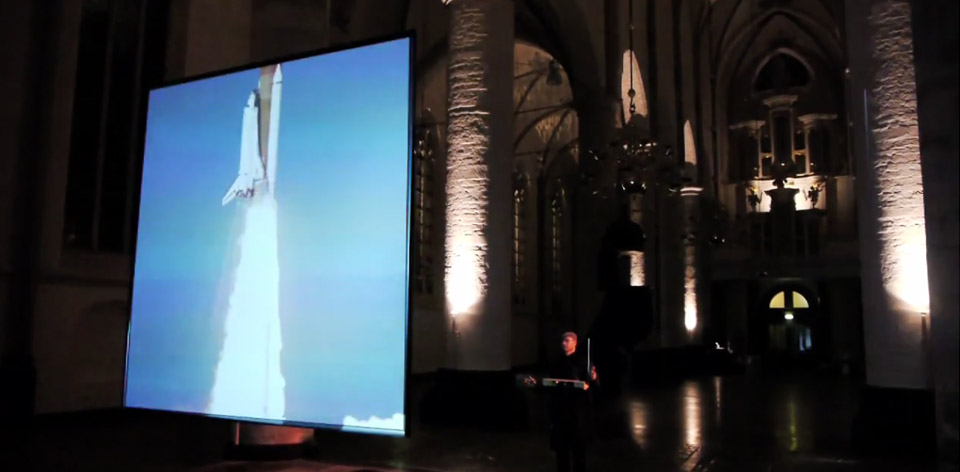
God’s Browser is a generative interactive installation that features a film whose every frame is an image taken from the Internet.
God’s Browser is inspired by the basic principle of cinematic illusion: a rapid sequence of individual images creates an impression of continuous motion in the viewer. Besides an illusion, though, it is also a theft, as specially developed image recognition software sorts images available on the World Wide Web and places them in sequence.
God’s Browser brings the ready-made creative process to video art: in the endless archive of the Internet, you can find virtually everything you could want. The soundtrack is also generated with image recognition software, which assigns similar notes to images that resemble each other. Visitors can influence the narrative by using a theremin connected to the installation.
God’s Browser 01 was developed at BALTAN Laboratories Eindhoven. Programmer: Carlo Prelz. Distributed by V2_Agency
Geert Mul (NL) is a Dutch media artist. In each of his installations, Mul addresses the function and specificity of the space the work will inhabit.
2011 – Entry Selected #5
Chess For CCTV Operators
!Mediengruppe Bitnik (CH)
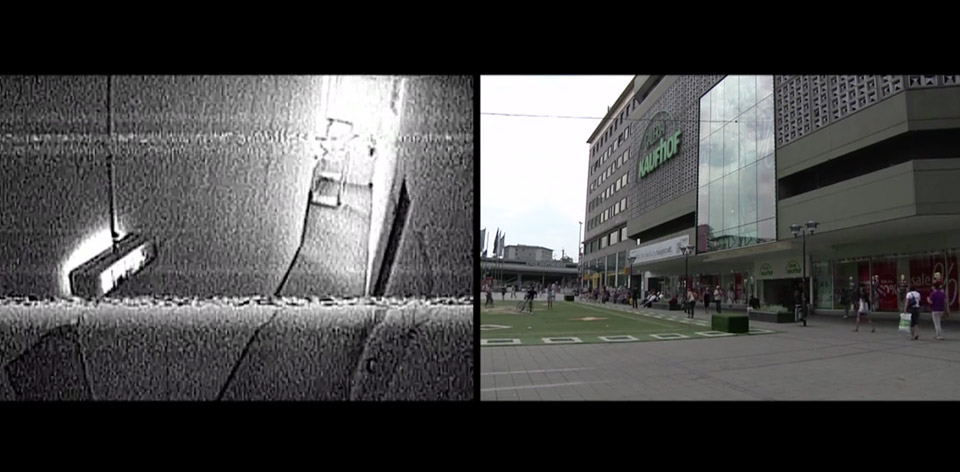
>Chess For CCTV Operators is a performance for which surveilled urban spaces are the stage.
For their urban hack !Mediengruppe BITNIK fitted a portable suitcase with a video transmitter, an antenna and a chess computer. Equipped with this suitcase they went, during the three day intervention in the city, in search of security camera signals to take over and camera operators to challenge to a game of chess.
The take-over made the surveillance camera image on the operators screen suddenly disappear showing instead a chess board and the text “Will you play chess with me? – You are white, I am black”, and stating a telephone number for communication. Surveillance systems work one-directionally; they do not fulfil any communicative purpose.
Chess For CCTV Operators reverses this by realizing a shift of power: “surveillance” – watching from above – becomes “sous_veillance” – watching from below
!Mediengruppe BITNIK (CH) is a Zurich-based artist collective (Carmen Weisskopf and Domagoj Smoljo) focused mainly on investigating digital and analogue media and their impacts on society.
2011 – Entry Selected #6
Tardigotchi
SWAMP (NZ)/(USA)
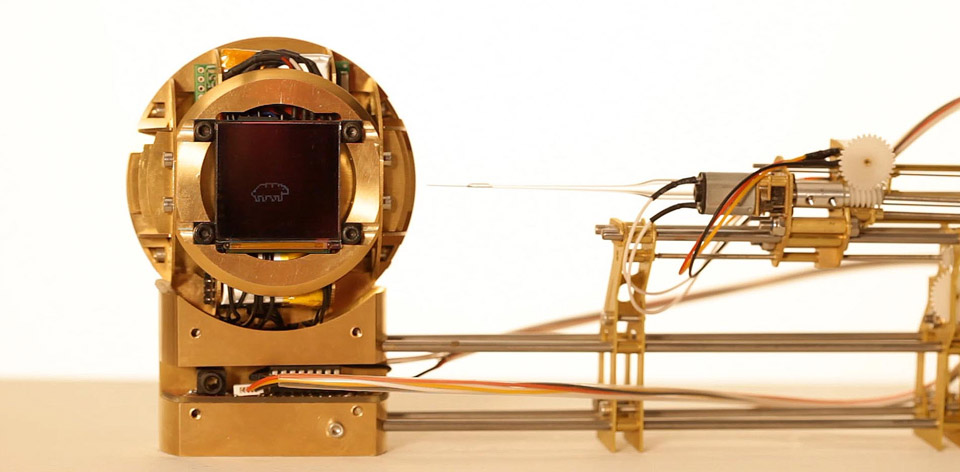
Tardigotchi is an artwork featuring two pets: a living organism, a tardigrade, and an alife avatar.”
These two disparate beings find themselves the unlikely denizens of a portable computing enclosure. A tardigrade is a common microorganism measuring half a millimetre in length. The alife avatar is a caricature of this tardigrade, its behaviour is partially autonomous, but it also reflects a considerable amount of expression directly from the tardigrade’s activities.
What is interesting about this toy, is how it popularly encourages pet-owner behaviour through a device that is ostensibly more like a cell phone than a cat. By pushing a button, the virtual pet is fed, which in turn will feed the tardigrade.
Tardigotchi has a social web presence: sending an email to the virtual character triggers a heating lamp, relaying a momentary signal of warmth to the tardigrade, while prompting the pixelated tardigrade to recline and soak up animated sun rays.
SWAMP (Studies of Work Atmosphere and Mass Production) is the collaborative effort of artists Douglas Easterly(NZ) and Matt Kenyon (USA). Design by Tiago Rorke.